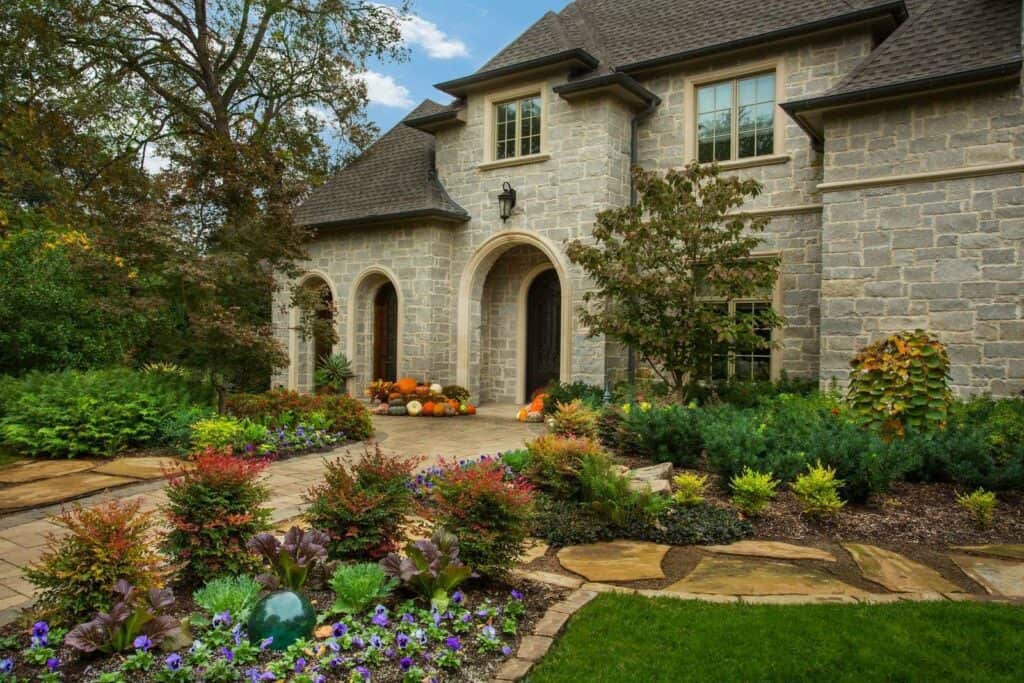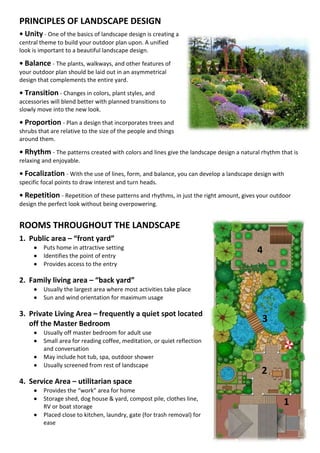The Best Guide To Landscape Design
The Best Guide To Landscape Design
Blog Article
Landscape Design for Beginners
Table of ContentsWhat Does Landscape Design Mean?A Biased View of Landscape DesignAbout Landscape DesignThe Buzz on Landscape DesignNot known Details About Landscape Design
A lawn can generally be separated right into three locations: public (the front yard), personal (the back yard), and service (usually the side lawn). The area of activity locations depends largely on the type of area, the dimension of room required, the kind of task, and the desired proximity to various other activities and structures.The outside wall surface of your house commonly functions as the initial wall surface or beginning factor of an exterior space. Inappropriate uses must be divided, and related tasks, such as food preparation and eating, ought to be created to make the backyard extra effective and pleasurable. When utilizing hardscape to create spaces, utilize building and construction product similar to that made use of in your home for continuity from your house right into the garden.
Connected rooms. Debt: Gail Hansen, UF/IFAS Utilizing comparable hardscape attributes and repeating plants draws the eye around the garden.
The Best Guide To Landscape Design

For psychological comfort plants are made use of as physical or suggested barriers for privacy and security. Physical obstacles obstruct both the view and accessibility to a room and include fencings, walls and plant bushes.
Physical and implied barriers. Credit Rating: Gail Hansen, UF/IFAS For these reasons, the kinds of plants to be used (such as trees, bushes, or groundcovers) need to be selected in the onset of planning (Landscape Design). Plant kinds are chosen for their useful abilities so that their future function and needed space can be thought about at the same time

Landscape Design for Beginners
Each plant mass is in front of, behind, or alongside, another mass. Number 11. Straight plant layers. Credit: Gail Hansen, UF/IFAS Number 12. Upright plant layers. Landscape Design. Credit Score: Gail Hansen, UF/IFAS Repeating plants within a mass and repeating masses with similar plants ties the garden together. The private plant qualities must be thought about to effectively layer and mass plants.
All plant make-ups begin with the main framework plants, the huge, mostly evergreen history plants-such as the trees and large hedges. have a peek at this website These plants different or enframe spaces, control the size of the space, and offer the starting point for choosing the proper qualities of the second layer, midground plants, for massing and infill.
Crucial factors in the yard must be highlighted by the use of unique plants, this content distinct structures, or garden ornaments. Noting limits or entrances to rooms can be finished with entrances, arbors, and actions, or via making use of one-of-a-kind and vibrant plants. The kind and/or design motif of the yard will certainly often assist establish the crucial points and just how they should be highlighted.
Other essential areas in the yard are focal points, which is used to visually organize a landscaped location. Various viewpoints or perspectives can expose different make-ups in the landscape that might need a variety of focal factors.
Landscape Design Things To Know Before You Buy

Plant kinds. Credit History: Gail Hansen, UF/IFAS After kind, structure is the following dominant feature of a plant; crude, medium and fine structures can be utilized for contrast and focus in the landscape.
The enjoyable scent of plants, the audio of wind in the trees, the noise and texture of water, and the colors and textures of sculptures, pots and garden furnishings all add to the experience of the yard. One detail that is typically forgotten is the impact of light on the appearances of the plants.

Examine This Report on Landscape Design
It is necessary to know the ultimate fully grown size of plants so they can be placed in the right area and spaced effectively when they are set up. Offering plants area to grow is an obstacle because the typical fully grown dimension is commonly based upon ideal growing problems and the environmental problems of a site may cause a plant to grow larger or remain smaller.
Report this page